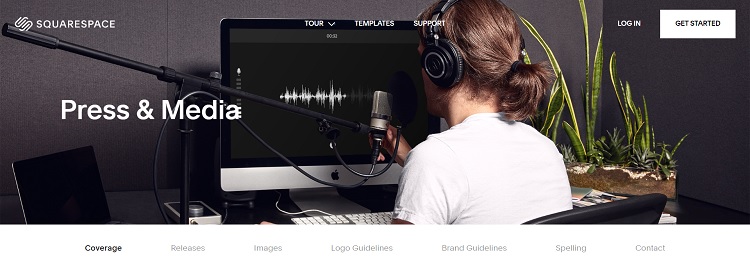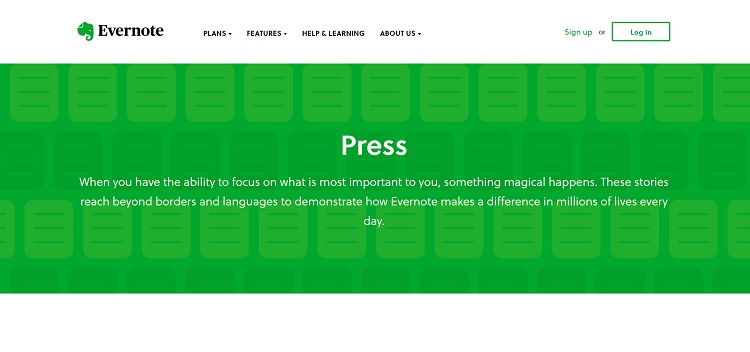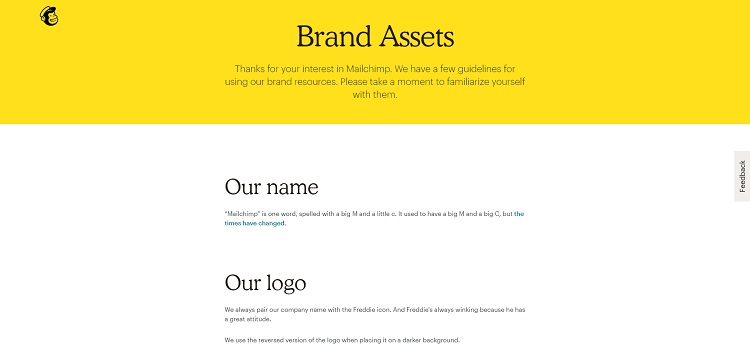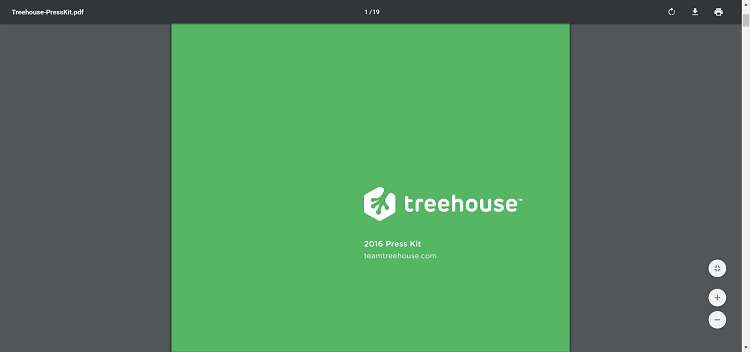Press kits are usually available on the homepage for transparency and ease of use, but various businesses and websites use it in different ways.
If you’re a start-up company, press kit examples are even more important as they can show you how to market to journalists and attract clients and partners, or anyone willing to invest in your brand.
Key Takeaways on Press Kits
- Essential for Visibility: Press kits are crucial for providing clear, accessible information about your business to journalists, clients, and investors, enhancing brand exposure.
- SEO Benefits: An electronic press kit (EPK) can significantly improve your SEO by facilitating backlinks and social media mentions.
Content and Placement: Your press kit should include company history, achievements, staff bios, FAQs, and logos. Placement on your website should prioritize journalist accessibility. - Diverse Formats and Examples: Successful platforms like Squarespace, Evernote, Mailchimp, Intercom, and Treehouse use various strategies for their press kits, from showcasing recent press coverage to offering downloadable PDFs for convenience.
- Customization and Clarity: Tailor your press kit to reflect your brand’s unique story and offerings, ensuring information is digestible and assets are easy to find and use.
Why Do You Need a Press Kit?
The information on your business should be readily available to journalists or any writers that might take an interest in it at any time.
Having a clear and easily readable website that might draw journalists in can even give you free exposure.
However, the opposite is also true; if any writer is confused by your website layout and about the information provided by the press kit, they can easily wander off to your competitor.
SEO also plays a role here as having an EPK, or an electronic press kit means people can put backlinks leading to your site, which makes social media tags and mentions that much easier.
A clear and confident message will make your brand seem stronger, and attract all the attention you need.
Where to Put the Press Kit on Your Website
If journalists are your primary audience for a press kit, then think of your business and website from their perspective. The contents of a press kit vary from business to business but be sure to include the important information that can be understood at a glance.
It should include the brief company history along with the list of awards, news stories, and accomplishments you’ve made. You can also put up a biography of your core staff members, an FAQ chapter, and of course, the image of the logo.
Here are 5 examples of how some prominent websites and services handle press pages:
1. Squarespace

While opening Squarespace’s press page, you’ll get their most recent press coverage on display. This is great in terms of providing a chronological outlook and makes it immediately obvious what was recently covered and when.
2. Evernote

Their website tries to explain the purpose of every page as clearly as possible. Evernote provides listings of their company and recent news mentions to fortify the brand and demonstrate its relevance. They also provide further guidelines and assets for anyone who’s interested.
3. Mailchimp

Mailchimp aims to gather all its rules, images, and brand details on a single clear page. By scrolling down, you can learn more about their color choices, brand history, and more. This approach is straightforward yet effective, providing you with all the information at once in an easy-to-read layout.
4. Intercom

Here it’s a similar thing with everything being visible and laid out as soon as you open the page. They have various brand logos displayed next to the download links for each asset, so there’s no confusion on how to get anything.
5. Treehouse

Treehouse has their press kits and information available in a PDF format that you can download and browse at your convenience. Relying on well-known external formats such as PDFs can also be an effective strategy as many people are used to working with them. They also provide embedded links to relevant sources, logos, and images.
Now It’s Your Turn
These 5 press kit examples should give you a good head start as what to create as resources for your audience. The easier you make it for your stakeholders to learn more about your company and get assets to use when talking about it.
This article originally appeared on 2pinz.com